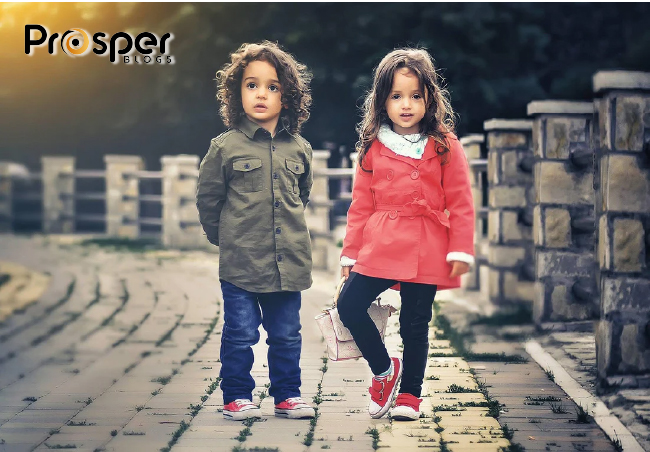DIY Crafts and Activities for Children: Fun and Educational Projects
Introduction:
Engaging children in do it yourself (DIY) crafts and activities is not only a delightful way to spend quality time together but also a powerful tool for fostering creativity and learning. In this blog, we'll explore a myriad of DIY crafts and activities designed to captivate the imagination of children while providing valuable educational experiences. From simple arts and crafts to hands on science experiments, these projects aim to make learning enjoyable and memorable for children of all ages.
Arts and Crafts:
Paper Plate Animals: Creativity and Fine Motor Skills: Transform ordinary paper plates into a zoo of animals. This craft encourages creativity as children design and decorate their favorite animals, enhancing fine motor skills through cutting, gluing, and coloring.
Sock Puppets:
Imaginative Play: Old socks become whimsical characters in this DIY project. Children can create their own sock puppets, fostering imaginative play and storytelling. This activity also introduces basic sewing skills for added learning.
DIY Sticker Cards:
Fine Motor Skills and Creativity: Provide blank cards and let children create their own greeting cards using stickers. This activity enhances fine motor skills as they peel and place stickers while encouraging creativity in designing unique cards.
Nature Collage:
Outdoor Exploration and Art: Take children on a nature walk to collect leaves, flowers, and twigs. Back at home, create a nature collage using these findings. This activity blends outdoor exploration with artistic expression.
Science Experiments:
Rainbow in a Jar:
Color Mixing and Density: This vibrant experiment teaches children about color mixing and density. Layer different liquids with varying sugar concentrations to create a beautiful rainbow in a jar.
Homemade Volcano:
Chemical Reactions: Combine art and science by creating a homemade volcano. This experiment explores chemical reactions as children mix baking soda and vinegar to simulate a volcanic eruption.
Growing Crystals:
Crystal Formation and Patience: Grow crystals at home with simple household items. This project introduces children to the concept of crystal formation and requires patience as they observe the gradual growth.
DIY Solar System:
Planetary Exploration and Creativity: Construct a mini solar system using common craft materials. This hands on project not only teaches about the planets but also allows children to express their creativity.
Educational Games:
DIY Memory Game:
Cognitive Skills: Create a personalized memory game by printing pairs of family photos or drawings. As children play the game, they enhance memory, concentration, and cognitive skills.
Alphabet Bean Bag Toss:
Letter Recognition and Gross Motor Skills: Craft bean bags with letters and numbers, then create a game where children toss them onto corresponding targets. This activity combines letter recognition with gross motor skills.
Math Bingo:
Mathematics and Fun: Customize Bingo cards with math problems suitable for the child's level. As numbers are called out, children solve the equations, making learning math an entertaining game.
DIY Story Cubes:
Creativity and Storytelling: Craft story cubes with different images on each side. Roll the cubes, and children create imaginative stories based on the pictures, enhancing creativity and storytelling skills.
Outdoor Adventures:
Nature Scavenger Hunt:
Observation Skills and Nature Exploration: Create a list of items for a nature scavenger hunt. Children use their observation skills to find and check off items while enjoying the outdoors.
DIY Bird Feeders:
Environmental Awareness: Craft simple bird feeders using recycled materials. Hang them in the garden and observe the visiting birds, fostering an appreciation for nature and environmental awareness.
Chalk Obstacle Course:
Physical Activity and Creativity: Design a chalk obstacle course on the driveway or sidewalk. This activity combines physical exercise with creativity as children navigate the course.
Garden Planting:
Botany and Responsibility: Involve children in planting a small garden. This hands on experience teaches them about plant growth, responsibility, and the importance of caring for the environment.
DIY Learning Tools:
Homemade Flashcards:
Customized Learning: Craft personalized flashcards for various subjects. This DIY approach allows tailoring the content to the child's current learning level and interests.
Math Manipulatives:
Hands On Mathematics: Create math manipulatives using household items like buttons or beads. These tactile tools enhance understanding of mathematical concepts through handson exploration.
DIY Alphabet Puzzle:
Letter Recognition and Fine Motor Skills: Craft an alphabet puzzle by cutting out letters and attaching them to puzzle pieces. This project aids in letter recognition and improves fine motor skills.
Homemade Story book:Literacy and Creativity: Encourage children to write and illustrate their own storybook. This activity promotes literacy skills, creativity, and a sense of accomplishment.
Upcycled Crafts:
Egg Carton Caterpillar:
Creativity and Recycling: Transform an egg carton into a colorful caterpillar. This upcycled craft not only encourages creativity but also teaches the importance of recycling.
Toilet Paper Roll Binoculars:
Imaginative Play and Recycling: Turn toilet paper rolls into binoculars for pretend play. This project promotes imaginative play while repurposing everyday items.
Cardboard City:
Architectural Creativity: Collect cardboard boxes and create a cardboard city. Children can design and build their own structures, fostering architectural creativity.
Upcycled Bottle Planters:
Environmental Stewardship: Turn plastic bottles into planters for small herbs or flowers. This project combines creativity with environmental awareness, teaching children about upcycling and gardening.
Conclusion: Crafting a Bright Future
Engaging in DIY crafts and activities with children not only provides entertaining moments but also lays the foundation for a lifelong love of learning. These projects encompass a wide range of subjects, from art and science to mathematics and literacy, fostering holistic development in a fun and interactive way. As you embark on these creative endeavors with your children, cherish the moments of shared laughter, discovery, and accomplishment. By integrating DIY crafts into your routine, you contribute to a rich learning environment, nurturing curious minds and crafting a bright future for the young learners in your life.






